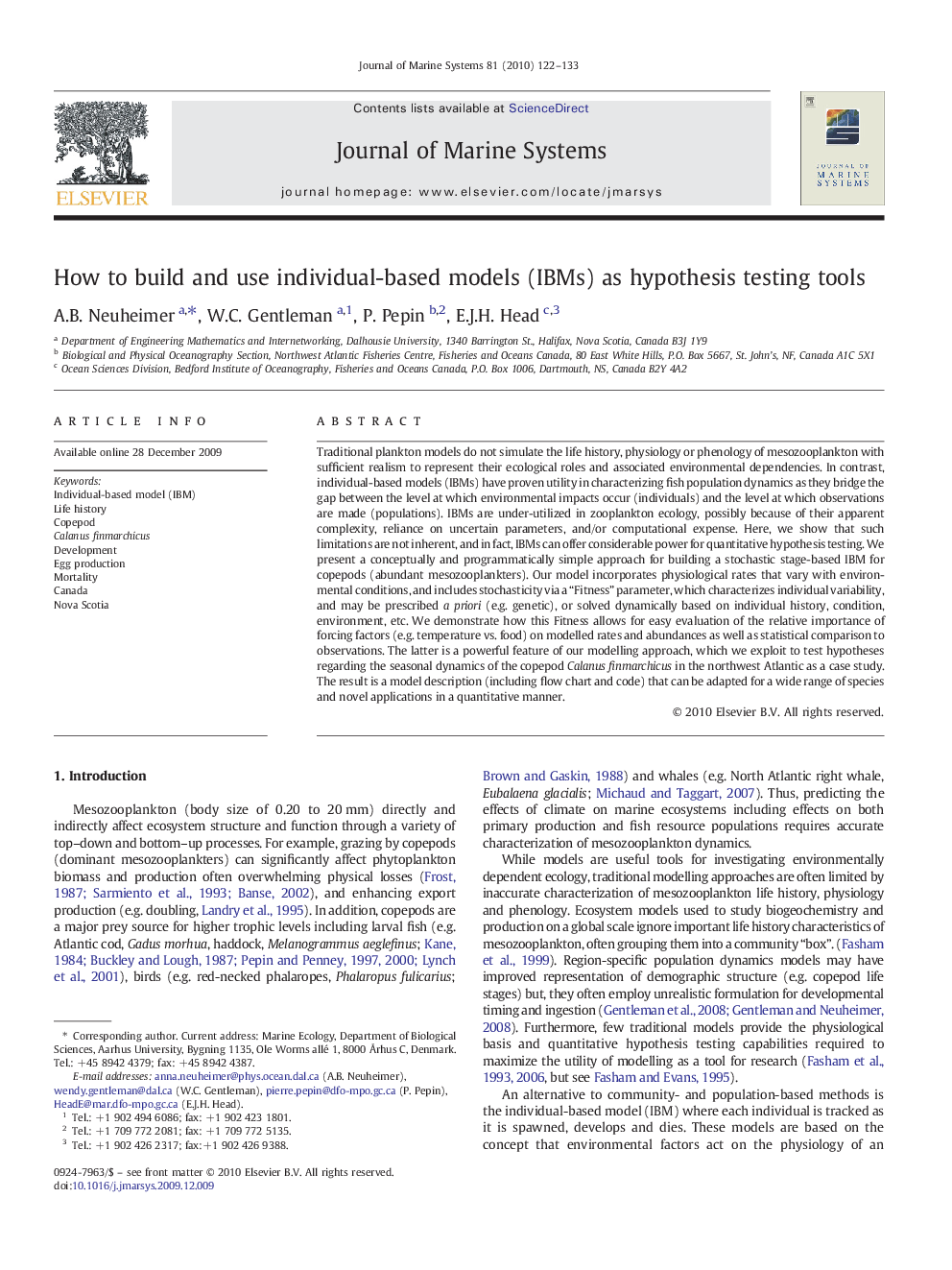| Article ID | Journal | Published Year | Pages | File Type |
|---|---|---|---|---|
| 4548585 | Journal of Marine Systems | 2010 | 12 Pages |
Abstract
Traditional plankton models do not simulate the life history, physiology or phenology of mesozooplankton with sufficient realism to represent their ecological roles and associated environmental dependencies. In contrast, individual-based models (IBMs) have proven utility in characterizing fish population dynamics as they bridge the gap between the level at which environmental impacts occur (individuals) and the level at which observations are made (populations). IBMs are under-utilized in zooplankton ecology, possibly because of their apparent complexity, reliance on uncertain parameters, and/or computational expense. Here, we show that such limitations are not inherent, and in fact, IBMs can offer considerable power for quantitative hypothesis testing. We present a conceptually and programmatically simple approach for building a stochastic stage-based IBM for copepods (abundant mesozooplankters). Our model incorporates physiological rates that vary with environmental conditions, and includes stochasticity via a “Fitness” parameter, which characterizes individual variability, and may be prescribed a priori (e.g. genetic), or solved dynamically based on individual history, condition, environment, etc. We demonstrate how this Fitness allows for easy evaluation of the relative importance of forcing factors (e.g. temperature vs. food) on modelled rates and abundances as well as statistical comparison to observations. The latter is a powerful feature of our modelling approach, which we exploit to test hypotheses regarding the seasonal dynamics of the copepod Calanus finmarchicus in the northwest Atlantic as a case study. The result is a model description (including flow chart and code) that can be adapted for a wide range of species and novel applications in a quantitative manner.
Keywords
Related Topics
Physical Sciences and Engineering
Earth and Planetary Sciences
Oceanography
Authors
A.B. Neuheimer, W.C. Gentleman, P. Pepin, E.J.H. Head,
